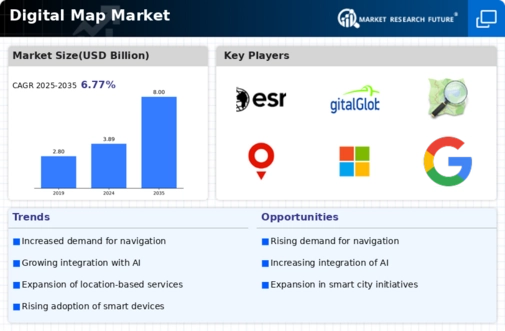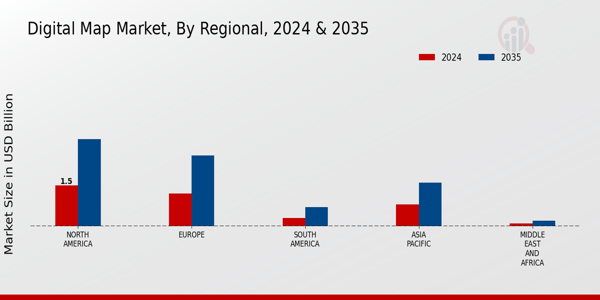Market Share
Digital Map Market Share Analysis
The market for digital maps is fast changing and needs strong plans to have more of it, so it can beat others in business. In this deeply connected world, digital maps are now very important for many uses. These include helping people get around and finding places, to business statistics and city planning. A common way big companies in this market stand out is by using new technology. Firms spend a lot to make top map tools.
These include live traffic reports, digital pictures that go on real places and smart ways of working with maps and locations in detail. These businesses want to catch a big part of the market by giving better things than others. They serve different customer wants and likes in interesting ways. A very important part of getting a good position in the Digital Map Market is making smart deals and teaming up with others. Understanding how valuable it is to bring together information and make services smooth, bosses in the tech business often join forces with other companies that work on software or maker stuff.
This not only makes their digital maps cover more area but also improves the overall experience for users. For example, combining digital maps with commonly used navigation apps helps make a system that works well. This makes it more likely for people to pick one specific map service over others because they can use what they most like in their phones and cars together easily. Also, a main thing that sets digital map services apart is putting the user first and keeping things simple. Firms work hard to make their maps and apps simple for everyone, including people from different groups. They want them easy-to-use and clear so all users can find things on the map okay. This focus on user experience helps keep current customers and attract new ones. This leads to a stronger position in the market. The cost plan is another important thing for digital map sellers in their share of the market. Some companies choose to offer lower prices, aiming at many people with cheap membership deals or free versions.
Some people place themselves as top-notch suppliers, providing fancy functions and services but at a more expensive cost. It's important to find the right mix of price and cost so you can get customers while still making money. Also, price models that can change like pay-as-you-go or company licenses help different groups of customers in what they need. This helps to get more market share from everyone fairly.















Leave a Comment